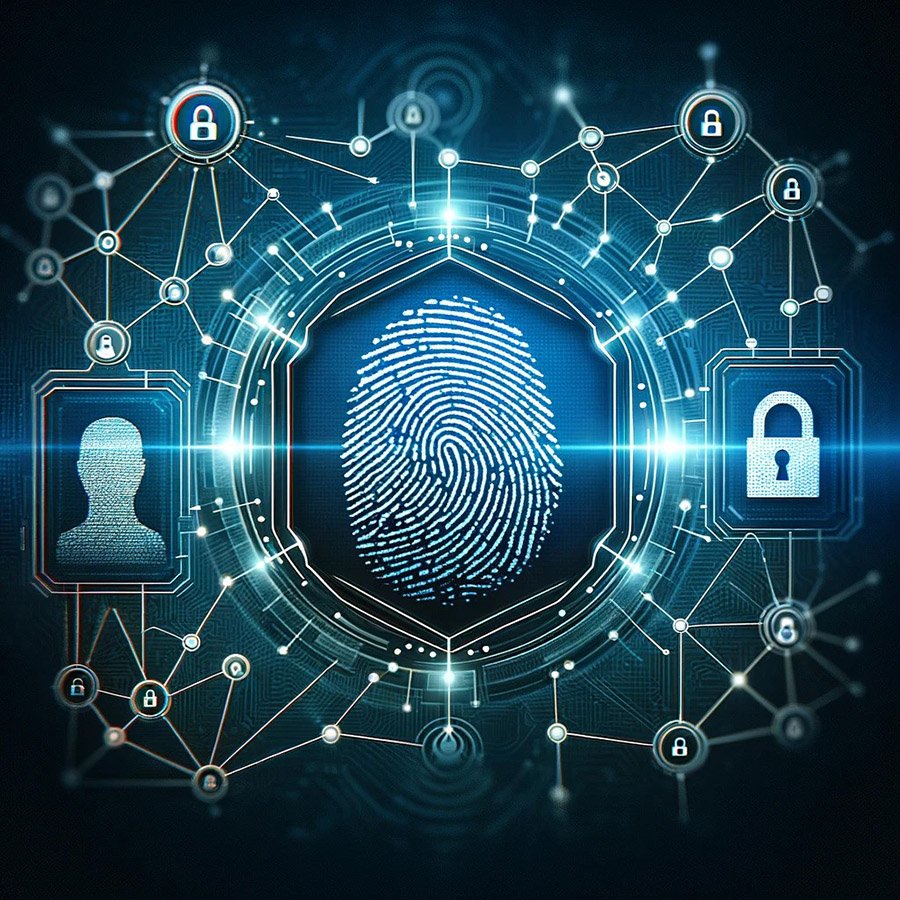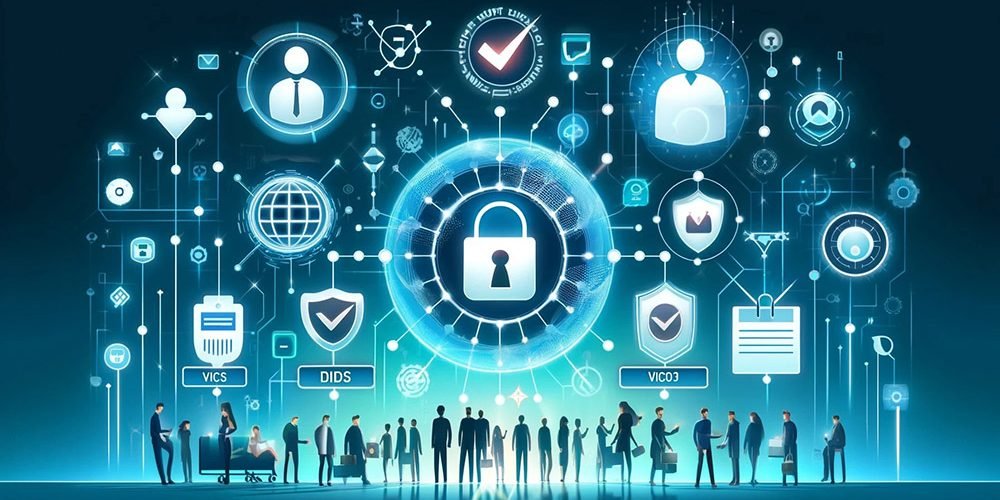The digital world is rapidly evolving as we enter the era of Web3, a decentralized internet vision promising to give users greater control over their online activities and data. Web3, or the third generation of the internet, is built on blockchain and decentralized technologies that reshape how we interact online.
In this new landscape, Web3 identity has emerged as a pivotal concept, allowing individuals to manage their digital identities without relying on centralized authorities.
A Web3 identity is a decentralized system where individuals have direct control over their personal data, verifying and sharing their information without intermediaries like governments or corporations. This revolutionary model contrasts starkly with traditional identity systems that depend on centralized databases, social media profiles, and email addresses for authentication.
Web3 identity prioritizes user privacy, security, and control, heralding a future where online identities can be seamlessly verified across platforms and applications.
The Evolution of Web3 and Identity Management
Brief History of Web1, Web2, and Web3
The internet has evolved through three significant phases:
Web1 was the first iteration, characterized by static web pages that allowed users to read information but offered minimal interactivity. The focus was on connecting documents through hyperlinks.
Web2 emerged with the rise of social media platforms, blogs, and interactive websites, fostering dynamic content creation and user engagement. However, it also led to the dominance of centralized entities that collected and monetized vast amounts of user data.
Web3 now aims to decentralize the web, giving users control over their data and interactions through blockchain and cryptographic protocols. This evolution will empower people to read, write, and own their content while interacting directly with decentralized applications.
Comparison of Centralized, Federated, and Decentralized Identity Management Systems
Identity management systems have evolved alongside the web, each with its strengths and weaknesses:
Centralized Identity Management relies on a central authority or organization to store and manage user credentials, like usernames and passwords. This approach is simple but creates a single point of failure, making data breaches potentially catastrophic.
Federated Identity Management uses a single set of credentials across multiple platforms by leveraging trusted partners like Google or Facebook for authentication. While this approach simplifies login, it increases the risk of compromising multiple accounts through a single data breach.
Decentralized Identity Management: Web3’s decentralized identity systems aim to overcome these challenges by giving users control over their credentials. They use decentralized identifiers (DIDs), verifiable credentials (VCs), and blockchain to verify identities without centralized authorities.

Problems with Centralized and Federated Identity Systems
Centralized and federated systems have served us well but also present significant challenges:
Centralized Systems are prone to data breaches because they store user data in single databases, often containing sensitive information like emails and passwords. Companies often have unrestricted control over user data, leading to misuse or unauthorized access.
Federated Systems: While reducing the burden of managing multiple logins, they introduce vulnerabilities by linking multiple platforms to a single set of credentials. If a hacker gains access to a federated system, it can compromise a user’s accounts across various platforms.
Understanding Web3 Identity
Decentralized Identifiers (DIDs), Verifiable Credentials (VCs), and Blockchain Technology
At the core of Web3 identity are decentralized identifiers (DIDs), verifiable credentials (VCs), and blockchain technology:
Decentralized Identifiers (DIDs): These are globally unique digital identifiers created without the oversight of centralized authorities like governments or corporations. DIDs are stored on the blockchain and can be verified cryptographically, giving individuals control over how their identity is presented online.
Verifiable Credentials (VCs): VCs are tamper-proof digital documents or certificates issued to an individual or organization that can be instantly verified via cryptographic signatures. They are similar to traditional credentials but are secured by blockchain technology, ensuring the credentials are trustworthy and accurate.
Blockchain Technology: Blockchain provides a decentralized, tamper-resistant ledger that stores DIDs and verifies the issuance of VCs. It acts as a secure platform for recording identity information while ensuring transparency and integrity.
Key Features and Benefits of Web3 Identity
Web3 identity offers several unique features and benefits:
- Self-Sovereign Control: Users directly manage their personal data and choose how much to share with different services.
- Interoperability: A single set of credentials can be used across various platforms, eliminating the need to maintain separate logins for each service.
- Enhanced Security: Storing identity information in decentralized databases makes it harder for hackers to access large amounts of data.
- Privacy Preservation: Techniques like selective disclosure and zero-knowledge proofs allow users to verify themselves without revealing unnecessary personal details.
Comparison with Traditional Digital Identity Models
Web3 identity significantly differs from traditional identity models:
- Centralized Systems: Rely on one entity for identity management, offering a single point of failure.
- Federated Systems: Use a central authority like Facebook or Google for login, linking multiple services to a single set of credentials.
- Web3 Identity: Operates without centralized control, providing user empowerment and interoperability while mitigating privacy risks.
Components of Web3 Identity
Decentralized Identifiers (DIDs): What They Are and How They Work
DIDs are unique identifiers that can be used to verify identity in a decentralized environment. Here’s how they function:
A user generates a DID and registers it on the blockchain. The DID links to a set of cryptographic keys that only the user controls. Users can create multiple DIDs for different purposes and platforms, giving them flexibility and privacy.
With DIDs, users can authenticate themselves securely without relying on a third party, maintaining full control over their data.
Verifiable Credentials (VCs): How They Add Value to Identity Verification
VCs are tamper-proof digital documents that securely prove an individual’s qualifications, attributes, or achievements:
They contain cryptographic signatures to confirm their authenticity.VCs are issued by trusted authorities and can be verified directly by checking the signature against the issuing authority’s DID. Users store VCs in digital wallets and share them with verifiers who can confirm the credentials’ legitimacy.
VCs can represent a wide range of identity information, such as educational qualifications, employee certifications, or government-issued documents.
Blockchain: Its Role in Securing and Linking Identity Information
Blockchain acts as the backbone of Web3 identity systems by providing a secure, transparent, and tamper-resistant ledger:
Each DID is registered on the blockchain, making it verifiable and persistent. The blockchain ledger can also store metadata about DIDs, facilitating their usage across different applications. VCs are linked to blockchain-registered DIDs, ensuring credentials are trustworthy and preventing tampering or falsification.
By decentralizing data and verifying identity information, blockchain plays a crucial role in enabling secure and user-centric identity management.

Benefits of Web3 Identity
For Organizations
Web3 identity offers several advantages for organizations:
Enhanced Data Security: Organizations reduce the risk of data breaches by minimizing the collection of sensitive data and storing less information centrally. With Web3, personal data is maintained by the users themselves, decreasing the organization’s responsibility for securing this data.
Reduced Data Breaches: Decentralized identity systems eliminate single points of failure, making it challenging for hackers to gain access to a large number of user credentials at once.
Trust and Reputation: Organizations that adopt Web3 identity systems can build a reputation for prioritizing user privacy and security, fostering trust among customers, investors, and partners.
Efficient User Onboarding: Web3 identities can streamline customer onboarding with verifiable credentials and reusable identities, eliminating tedious registration processes.
For Individuals
Web3 identity provides users with greater control and flexibility:
Privacy: Individuals can decide what information to share and with whom, and ensure that data is only accessed with their explicit consent.
Control: Users manage their identity information through DIDs and digital wallets, allowing them to verify themselves across different platforms.
Data Portability: Web3 identities can be used across multiple platforms, enabling seamless movement between services without repeatedly creating new accounts.
User Empowerment: Individuals can create and manage multiple identities to meet their specific needs, preventing tracking or misuse by unauthorized entities.
Use Cases and Applications
Digital Credentials, Age Verification, Proof of Ownership, and NFT-Based Identity
Digital Credentials: Web3 identity systems enable the issuance of tamper-proof digital credentials for educational achievements, professional certifications, and government documents.
Age Verification: Users can securely prove their age without revealing additional personal information, enhancing privacy in online transactions.
Proof of Ownership: Digital ownership of physical or digital assets can be verified securely, reducing fraud and increasing trust.
NFT-Based Identity: Non-fungible tokens (NFTs) can represent an individual’s unique digital identity, linking it to ownership of digital items like avatars, virtual goods, and collectibles.
Web3 Domains and Their Role in Identity Management
Web3 domains, like .eth or .crypto, are blockchain-based domain names that offer human-readable addresses for decentralized services. They can:
- Act as unique identifiers tied to a user’s decentralized identity.
- Simplify sending and receiving digital assets by replacing complex wallet addresses with easily memorable names.
- Serve as login credentials for decentralized applications (dApps) and services.
Other Innovative Applications
Metaverse Identity: Web3 identity systems enable secure verification and ownership of digital personas and assets in virtual worlds, helping users navigate the metaverse securely.
Decentralized Autonomous Organizations (DAOs): Web3 identity ensures transparent and fair governance in DAOs by securely identifying members and verifying their voting eligibility.
Gateway Passes: Web3 identity can provide reusable, verifiable credentials for accessing various platforms or services, reducing onboarding friction and simplifying verification processes.
Challenges and Future Directions
Adoption Barriers and Challenges in Moving to Web3 Identity
Transitioning to Web3 identity presents significant challenges:
- User Familiarity: Many people are accustomed to centralized identity systems and may find decentralized systems intimidating or difficult to understand.
- Technical Expertise: Organizations need the right expertise and infrastructure to implement Web3 identity, which may be beyond their current capabilities.
- Cost and Resources: Developing decentralized identity infrastructure requires initial investments in time and money, deterring some businesses.
The Need for Standardization and Interoperability Across Platforms
- Standardization: A lack of universal standards can hinder Web3 adoption, as different platforms may not be compatible, leading to fragmentation.
- Interoperability: Seamless integration across platforms requires interoperability standards, allowing identities to work smoothly on multiple networks and applications.
- Potential Regulatory Issues and Compliance Considerations
- Regulation: Web3 identity will need to comply with existing data privacy regulations like GDPR or CCPA while adapting to potential new frameworks.
- Identity Verification: Balancing decentralized control with Know Your Customer (KYC) and Anti-Money Laundering (AML) requirements may prove challenging.
Conclusion
Web3 identity offers a transformative shift in how individuals and organizations manage online identities, empowering users to control their data and secure their interactions. Organizations benefit from enhanced data security, reduced breaches, and improved trust, while individuals gain privacy, control, and the ability to carry their identity across platforms seamlessly.
Despite adoption barriers, Web3 identity’s potential for standardization, security, and self-sovereignty makes it a promising solution for a more transparent, user-centric internet. By embracing decentralized identity solutions, businesses and individuals can shape a secure digital future, enhancing trust and efficiency in the digital ecosystem.
Ultimately, Web3 identity is not just a technological leap but a step toward empowering individuals in a new era of secure, private, and user-controlled online experiences. Embracing this paradigm will be essential to navigating the increasingly complex landscape of digital interactions.








Add comment